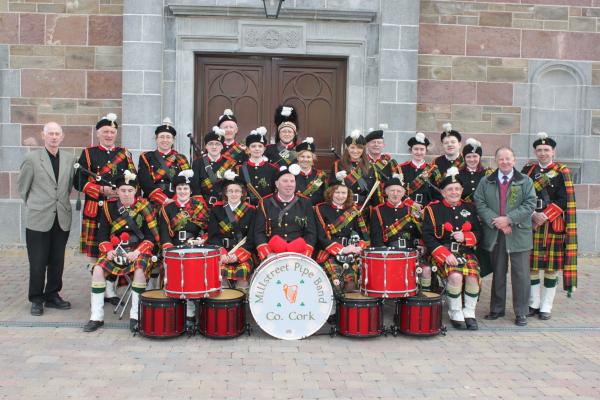
Millstreet Pipe Band’s 60th St. Patrick’s Day Parade – What a Record!

Community website for Millstreet, Co. Cork, Ireland

For our memories as ever we go to the past
And the clock on our lives ever ticking on fast
Our memories our gift with others for to share
Of what i say here many would be aware
Old scenes of the past do inspire me to rhyme
I go to the fifties that is going back in time
When young Dan Carroll on the horse drawn milk cart trotted up and down
The quiet streets of morning through old Millstreet Town
[read more …] “Dan Carroll’s Milk Run”
The Southern Star this week carries an article on the Carbery Football of the 1970s at the West Cork GAA awards. the Millstreet team are highly praised as fine adversaries :
… Millstreet were probably the strongest club team in the county with a handful of county players like the great Dinny Long, Humphrey Kelleher, John Coleman and Connie Hartnett and they fought some great battles with Carbery.
Who will ever forget the clash between Donal Hunt and Humphrey Kelleher in Macroom. Two iron men, neither backing down from the challenge, we can still hear the thump. Of course, those were the days when referees allowed the physical in football and there was a definite place for tough men. The pity was that such a fine Millstreet team never got to win the county …
Nóra Ní Shíndile was a native of Millstreet, and a professional keener (“bean caoinadh”) in the late 1790’s/early 1800’s. It is thanks to her that the poem Caoineadh Airt Uí Laoghaire survives today. About 1800, the scribe and poet, Éamonn de Bhál, transcribed Caoineadh Airt Uí Laoghaire from her rendering, thus preserving the full version of the caoineadh for posterity.
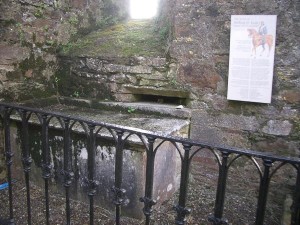
Caoineadh Airt Uí Laoghaire is one of the greatest love poems of the Irish Language. Eibhlín Dubh Ní Chonaill composed it capturing the life and death of her husband Art on May 4, 1773 in Carriganima.
The Irish tradition of keening over the body at the burial is distinct from the wake (the practice of watching over the corpse – which took place the night before the burial). The “keen” itself is thought to have been constituted of stock poetic elements (the listing of the genealogy of the deceased, praise for the deceased, emphasis on the woeful condition of those left behind etc) set to vocal lament. While generally carried out by one or several women, a chorus may have been intoned by all present. Physical movements involving rocking, kneeling or clapping accompanied the keening woman (“bean caoinadh”) who was often paid for her services. [read more …] “An Caoineadh Airt Uí Laoghaire”
 The year was 1985 and a group from Millstreet were in France to formalize the twinning of Millstreet and Pommerit-le-Vicompte. Above is a newspaper cutting from a French newspaper of the time. The caption reads ” Wednesday afternoon was devoted to a visit to Argoat. ” [read more …] “Jumelage avec Millstreet (Twinning with Millstreet)”
The year was 1985 and a group from Millstreet were in France to formalize the twinning of Millstreet and Pommerit-le-Vicompte. Above is a newspaper cutting from a French newspaper of the time. The caption reads ” Wednesday afternoon was devoted to a visit to Argoat. ” [read more …] “Jumelage avec Millstreet (Twinning with Millstreet)”
The Kennelly Archive represents a lifetime of work by Padraig Kennelly and his wife Joan, bore out of a passion for photography, that has culminated in an in-depth pictorial record of Co. Kerry. They have now digitized the negatives of the photography which appear on their website kennedyarchives.com.
Fortunately, he visited Millstreet a few times in the late 50s and 60s, attend a dance in the Star Ballroom, The Pipe Band Festival of 1958 and a few more visits. In total there are 143 photos in the collection which were taken in Millstreet, and amongst them some wonderful photos of people from the time. Many are still with us, some are no longer
All the photos are available for purchase on KennellyArchives.com and we would recommend that you would purchase those ones that are relevant to you as these kinds of photos only turn up once in a blue moon. However, all photos are available for previewing and details on how to view all the photos are given below: [read more …] “Kennelly Archives”
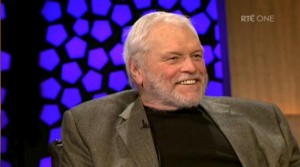
Brian Dennehy’s appearance on the Late Late on Friday evening is available on RTE’s website until January 28th. He refers to Millstreet where his grandfather came from twice in the interview and also to Noel C Duggan.
The interview lasts for the first 21 minutes of the programme. Watch the interview here. [read more …] “Brian Dennehy on the Late Late”
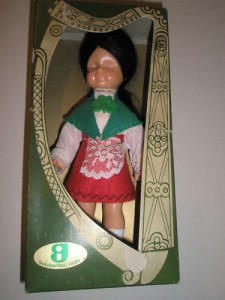 Vintage All Irish Made 8 1/4″ Character Doll by Clara Toys Millstreet Co. Cork., Guaranteed Irish on box! Currently on sale from eBay.
Vintage All Irish Made 8 1/4″ Character Doll by Clara Toys Millstreet Co. Cork., Guaranteed Irish on box! Currently on sale from eBay.
They don’t make them like that any more!
A lot of men in my young years in Millstreet did like their sports and did enjoy their grog
And they shlauned peat to warm their family homes in Winter in early Summer in Gneeves mountain bog
Around their fire grates on nights in the depths of Winter current affairs were discussed and other things they did recall
 Such as politics and sporting greats and of great teams and games of hurling and gaelic football
Such as politics and sporting greats and of great teams and games of hurling and gaelic football
They told stories of the War of Independence in Sliabh Luachra and Duhallow such as the ambush at Tureengarriffe Glen
Of a battle celebrated and often written about of the bravery of Sean Moylan and his men [read more …] “A Lot of Men”
The Millstreet Poor Law Union had a wide catchment area, and included Millstreet, Ballydaly, Knocknagree, Cullen, Derinagree, Kilcorney, and back into Millstreet again. Wikipedia has a list of all the Townlands in Cork, and within that the Millstreet Townlands are listed. From the smallest townland of Glebe (in Kilcorney) (13 acres) to the largest townland of Caherbarnagh (3,626 acres) there are a total of 182 townlands covering an area of over 74,441 acres or nearly 117 square miles (10.8miles x 10.8 Miles).
Drishane Civil Parish (33,061 acres, 58 townlands, 1 town)
Cullen Civil Parish (13,619 acres, 55 townlands)
The full list of townlands covered by the Millstreet Poor Law Union is below:
| Townland | Acres | Barony | Civil Parish |
| Adrivale | 460 | West Muskerry | Drishane |
| Ahane Beg | 158 | Duhallow | Cullen |
| Ahane Lower | 188 | Duhallow | Cullen |
| Ahane Upper | 303 | Duhallow | Cullen |
| Anagloor | 417 | Duhallow | Drishane [read more …] “Townlands of Millstreet Poor Law Union” |
 Photo of a Junior Infants Class in the original Presentation Convent N.S. from 1977 (approx) The new (current) building dates from 1978.
Photo of a Junior Infants Class in the original Presentation Convent N.S. from 1977 (approx) The new (current) building dates from 1978.
Back Row: Teacher – Mary McSweeney ? (originally of Minor Row), Denis Cronin, Mark Doherty, John O’Riordan, Edward O’Sullivan, Kieran Kelleher, Adrian Kelleher, Conor Corcoran, Stephen Duggan, Martin O’Shea.
Middle Row: Dan Barry, Thomas Barrett, Kevin Smith, Mick Murphy, Paddy Cotter, Noelle Crowley, Lisa Murphy, Carmel Dineen, Rose Regan, Noel Creedon, Donal Moynihan, Dermot Daly, Brian Murphy.
Front Row: Veronica O’Mahony, Liz Cotter, Eileen McCarthy, Karen Kelleher, Tina Murphy, Nuala O’ Leary, Michelle O’Leary.
Special thanks to Lisa Murphy (who now lives in New York) who gave us the the photo. She also asked to “Please ask all my Millstreet friends to keep my 3yr old son Adam in their prayers as he is due to have his 3rd open heart surgery very soon”. [read more …] “Holy Bear!”
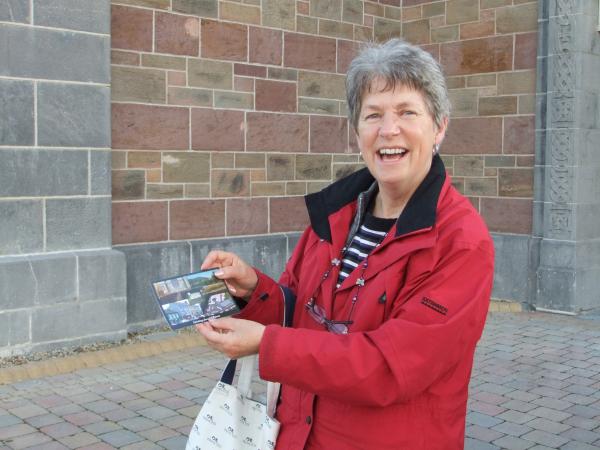
It’s quite amazing how we’ve have had two people from New Zealand tracing Millstreet roots over the past few days – Fr. Bernard Dennehy on Tuesday and now Julie on Thursday. Incidentally, our very good Friend, Denis Murphy of Cahirdowney, Millstreet, successfully carried out research as to
[read more …] “Julie Thomas from New Zealand Tracing Millstreet Roots & Denis’s Successful Research”
Assemble: Clara Road, Millstreet.
Parade up Main Street and return to Mill Lane
MacCurtain/McSwiney RFB In Attendance
2.00pm Sunday 31st Oct.
Speaker: Bandon Sinn Féin Cllr. Rachel McCarthy
Fáilte Roimh Cách / All Welcome
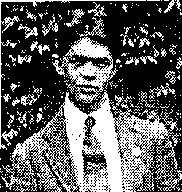
Paddy McCarthy (8/Feb/1896-22/Nov/1920)
The late Paddy McCarthy was born in Meelin and reared in Freemount, not far from Millstreet. He became an active member of Óglaigh na hÉireann following the 1916 Easter Rising.
On May 8, 1918 he was charged with a gun offence and imprisoned for 18 months.
He was held in Belfast and in Manchester where he managed to escape in October 1919.
He took part in the capture of Mallow Barracks in September [read more …] “Paddy McCarthy 90th Anniversary Commemoration”
Cork 3-17 Galway 2-13
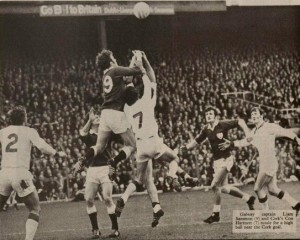
“… There was a time in the first half when I thought Cork were going to annihilate us; beat us by a cricket score. They were all over us; three men to the ball and Dinny Long rampant. He did more than anyone to break Galway’s back. Unchallenged, he raced through on solo-runs, often leaving yards between him and his bewildered and less fit opponents. Then when Galway started to rally Frank Cogan literally put Morgan Hughes in his pocket while Con Hartnett and Brian Murphy cleared ball after ball with ease and skill, John Coleman effectively barred Liam Sammon’s path to goal and after an early flourish Tom Naughton’s threat began to wane …” Read below for the full article [read more …] “All-Ireland Football Final 1973”
The images above are from the work of George Taylor & Andrew Skinner’s (both Scotsmen) entitled ”Maps of The Roads of Ireland”. Surveyed in 1777 and published for the authors on the 14th November 1778 in London. Millstreet is included in the roads,
Click the images to see the the maps that include Millstreet. They all give a slightly different representation of Millstreet.
Notes: In 1776, they sought funding from Ireland’s noblemen and gentlemen in order to map the roads of Ireland. They succeeded in raising over £2,000 which paid for [read more …] “Taylor-Skinner: Millstreet Road Maps from 1777”
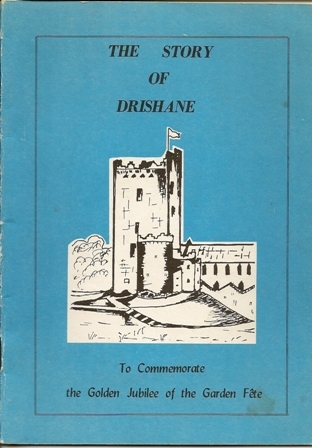 The Story of Drishane booklet – to Commemorate the Golden Jubilee of the Garden Fete – a 20 page booklet from 1980. [printed by Kanturk printers]
The Story of Drishane booklet – to Commemorate the Golden Jubilee of the Garden Fete – a 20 page booklet from 1980. [printed by Kanturk printers]
It is currently for sale on eBay.ie and the auction ends on [2nd Oct, 2010 at 9:31pm]
Jack Lane had written an article on Earl Spencer’s visit of 1884 which puts into question validity of the article written by the Irish Times (as added her last weekend). He has kindly allowed us to publish it on millstreet.ie.
The nationalist and Land League leader, William O’Brien M.P., used to refer to the Irish Times as the “Liarish Times.” He had good reason to do so as it was an inveterate opponent of national independence and the land struggle and consistently distorted and denigrated the aims and activities of both movements.
A classic example of this was its report of the visit of the Lord Lieutenant, Earl Spencer, to Millstreet on 7 September 1884. The Earl was an ancestor of Lady Diana. He unexpectedly visited the town and was accompanied by mounted and armed Hussars. The town had developed a reputation as a hotbed in the land war but this was only because the activities of the Land League had been highlighted by the local Parish Priest who uniquely among his peers was an inveterate opponent and used the media and the Unionist media in particular to promote his opposition over a number of years. He was articulate and well connected and also participated in various Government commissions to further his views. Millstreet was not much different from elsewhere but his media outpourings made it appear so and it gained a reputation for what was called lawlessness and the Irish Times report, naturally enough, lays this on with a trowel which [read more …] “On the Spencer visit of 1884”
 The Lord Lieutenant of Ireland in the early 1880s, Lord Spencer, set out by rail and horseback for a tour of the south of the country at the height of the Land League campaign. This report from September 8th, 1884 covered his visit to Millstreet:
The Lord Lieutenant of Ireland in the early 1880s, Lord Spencer, set out by rail and horseback for a tour of the south of the country at the height of the Land League campaign. This report from September 8th, 1884 covered his visit to Millstreet:
EARL SPENCER is a man not easily driven from the path he has deliberately chosen or he would have resigned his intention to visit the birthplace and home of the Moonlighters yesterday. Millstreet is not the place of all others in this part of the world where the administrator of the Crimes Act might anticipate a cheerful welcome, and its selection as the scene of his first visit just after his arrival in the south shows as much perhaps as anything could do, the determination of the Viceroy, who has throughout so terrible a period of our history as that chronicled since the date of the [Phoenix] Park murders [in 1882], held a firm grasp of the reins of government, and calmly and courageously faced the situation with all its perils and difficulties.
But it is not solely because the district through which he rode was one of the most notorious haunts of lawlessness, that the journey of [read more …] “Earl Spencer’s visit to Millstreet”
 Yesterday a comment came in from Jerry Kelleher to do with the Keel Graveyard. It deserves recognition in its own right because it lays the foundation for maybe getting some archives for the Workhouse in Millstreet, and in turn the Keel.
Yesterday a comment came in from Jerry Kelleher to do with the Keel Graveyard. It deserves recognition in its own right because it lays the foundation for maybe getting some archives for the Workhouse in Millstreet, and in turn the Keel.
Also, at the end, he also asks a very relevant question:
…if Ballydaly School is closing down – what steps are being taken to preserve its records, photos, roll books etc?
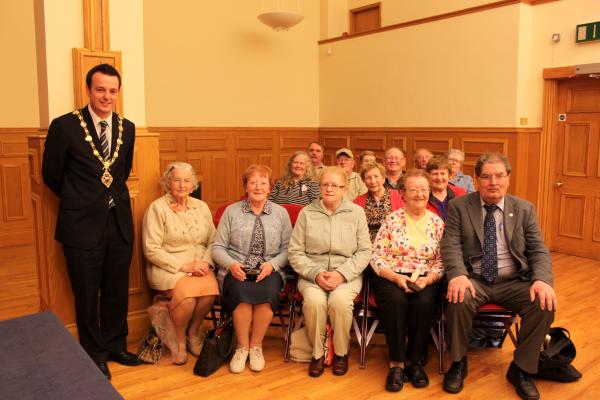
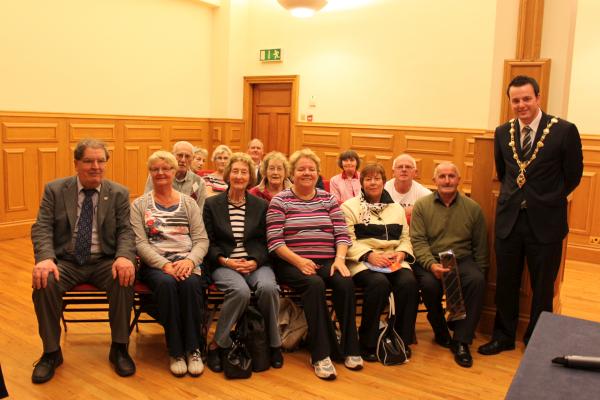
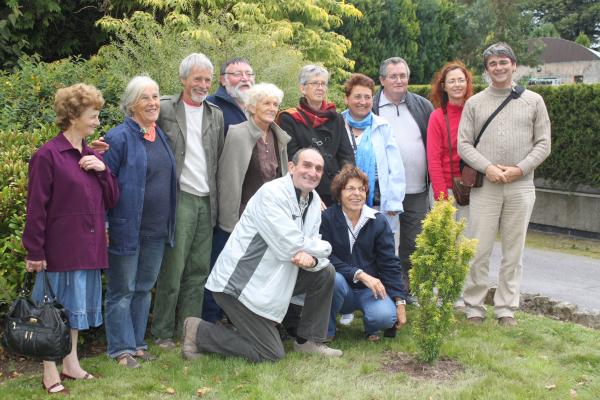

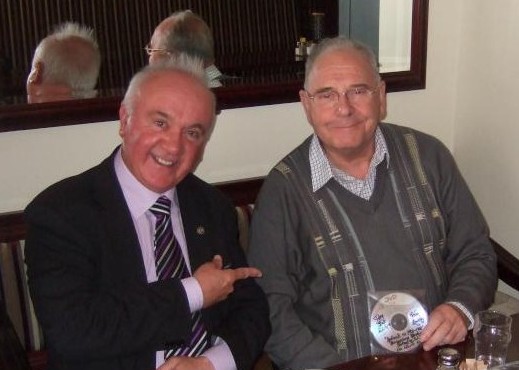
Meeting with author Tom Grainger (on right) at the Wallis Arms Hotel today. Tom’s excellent book “A War Baby – Rags to Riches” (See Tom’s splendid website www.tomgraingerbooks.com ) is now in its second edition and will soon be available at “Wordsworth” Bookshop, The Square, Millstreet. Tom has many wonderful connections [read more …] “Author Tom in Millstreet”
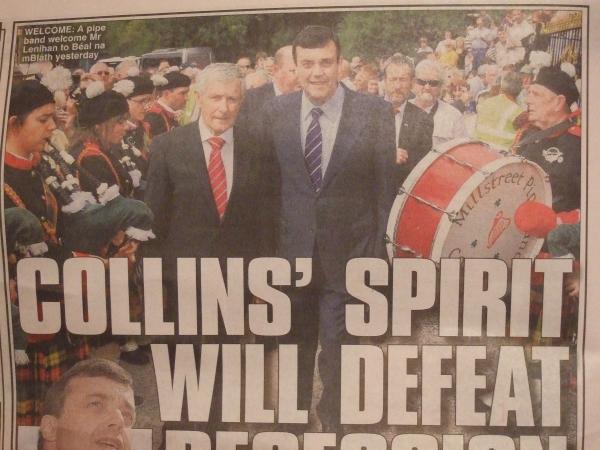
[read more …] “Pipe Band at Béal na mBláth”
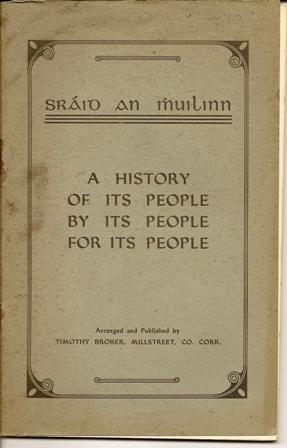
Sráid an ṁuilinn [Millstreet, County Cork, Ireland] A History of its people by its people for its people. Part 1. Arranged and published by Timothy Broker, Millstreet, Co. Cork., no date, c.1930s.
Millstreet museum currently has a copy of this publication, as do some private residences locally, and there is a copy in the National Library of Ireland
Timothy Broker is a pseudonym, as it was actually written by Fr. William Ferris, a curate in Millstreet in the 1930s, who had a previous publication blocked by the Bishop of Kerry, so he used the pseudonym to get around this. He devoted himself to recording oral history and folklore in danger of going to the grave; as he put it, “Each time the east wind blows, it takes an old seanachaí with it”.
============
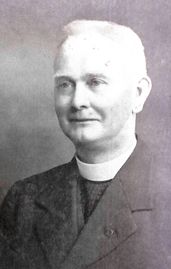
Fr. William Ferris was in Millstreet Parish from 1934-1935.
Apparently it was compiled from information gathered at Station Masses, It is a comprehensive list of the antiquities of the area. [2: Origin and Development of the Parish of Millstreet]
The book was published in 1937 (reprinted 1972 and 1982).
He is not to be confused with Fr. Owen McFineen Ferris who was Parish Priest of Drishane around 1700, and whose church was the old one in Ballydaly, about 250m south of Croohig’s cross. [2]
Read more on Fr. William Ferris in this other article: Fr Ferris Parish Histories (2018)
============
The book was reviewed in 1837 by the Cork Historical and Archaelogical Society. See the review here:
Sráid an Mhuilinn. A History of its People, by its People, for its People. Part I. Arranged and published by Timothy Broker, Millstreet, Co. Cork. Price 2s. net.
This booklet (of 56 pages) is, perhaps, a sign of the times. Its compilation is a sign that one man is interested in the history of his locality ; its publication is an indication of the author’s optimistic outlook that many others are sufficiently interested to be readers of the information he has brought together. We sincerely hope Mr. Broker’s optimism is justified and we wish the booklet every success. The sub-title is misleading. The booklet is not a “history ” of the parish ; it is, what is much more valuable, a survey of the archaeological remains in it : fulachta fiadh, megaliths, standing stones, holy wells, forts and souterrains, as well as some other finds and miscellaneous monuments. A book of this kind must not be judged by the same standards as one by a recognised authority on history or archaeology. Its faults are obvious, but it is, nevertheless, a very useful compilation and of value not only to those who live in the Millstreet area but also to those caring for Irish archaeology, wherever they live. The specialist will find in it some items of interest, e.g., the note on the finding of a bronze axe in a fulacht fiadh at Baile na Tona (p.11). It is further of considerable value to have as it were a statistical summary of all the remains of antiquity in a particular area, especially since so many of the remains are not so outstanding as to be noticed in archaeological literature generally and belong to the less ” respectable ” side of archaeology. The townland names are given in Irish. This is excellent, but, when unaccompanied by the Ordnance Survey Map form, leads to one inconvenience. The official map spelling of the name may be quite at variance with local pronunciation and philological accuracy, but it is the only one which the worker unacquainted with the district can use in order to find the name in the townland census or on the map. We therefore feel that the official names might have been inserted either in brackets under the Irish forms or as an addendum. Booklets of this kind are frequent in France. The author may be the local teacher, abbe or local official, and they vary much in excellence, but almost all are of use because they are local in their treatment. It is to be hoped that we shall have more of such work in Ireland. We conclude this review by a quotation from a passage (refreshing, whether we agree with it or not) in Mr. Broker’s Foreword : ” I like parish history. It is the best antidote for, as it is the antithesis of the daily newspaper, the latter focusing all space on one small point of time and making, in my opinion, for ignorance and savagery, and the former focusing all time on one small point of space and making for knowledge and civilisation.”
As promised on 15th July 2010 we now feature that very special c.1954 school photograph kindly provided by Joe Hickey (Killarney & Millstreet) and identified by Joe, Jerry Lehane and Tommy Burke – all of whom appear in the picture. The location is Millstreet Boys’ National School on Clara Road and the teacher is Mr. William (Bill) O’Keeffe. It’s likely that there are two classes included – possibly, 3rd and 4th Class. We are hoping that someone may identify the one person we have been unable to identify. (Seán Radley for www.millstreet.ie )
Note: a larger photo has been uploaded for a better view of the picture. Click on the photo below to see it:

A Committee was formed in 1955 with a view to acquiring part of the McCarthy O’Leary estate for the people of the town and district. The committee consisted of the following Rev. Denis CurranC.C. Denis J. Buckley, John Phillips, Patrick Cashman, John Murphy, Richard Kiely, Jeremiah Corcoran, Tady O’Driscoll, Denis J Hickey, Patrick Coleman, Matthew O’Sullivan, Denis Kelleher, Patrick O’Flynn, Robert Justice, Daniel Kelleher, Denis McSweeney and Denis Duggan.
Thirteen acres and one road were purchased from Thomas Horgan on 31st August 1956. The original trustees were Richard Kiely, Patrick O’Flynn and Daniel Kelleher. The rules and regulations for the management of the park were adopted at a meeting on the 11th of January 1957.
John Murphy was the first secretary and was succeeded by Pat Kelly and then John O’Keeffe who is the present Secretary. Rev. Denis Curran C.C. was the first chairman, succeeded by Denny Twomey and then by William O’Leary who is the present Chairman. Patrick O’Flynn was the first Treasurer succeeded by Cormac Dineen who was succeeded by his daughter Maura who is the present treasurer. Denny Twomey and Cormac Dineen were also appointed trustees.